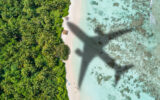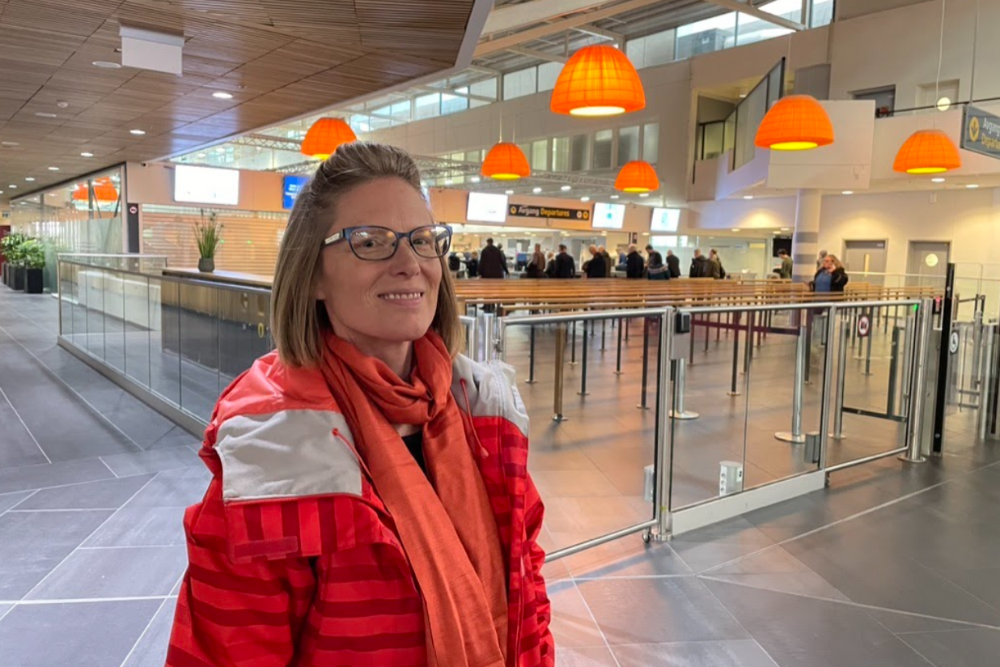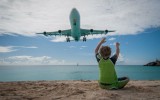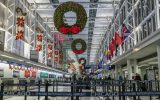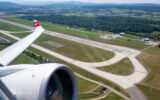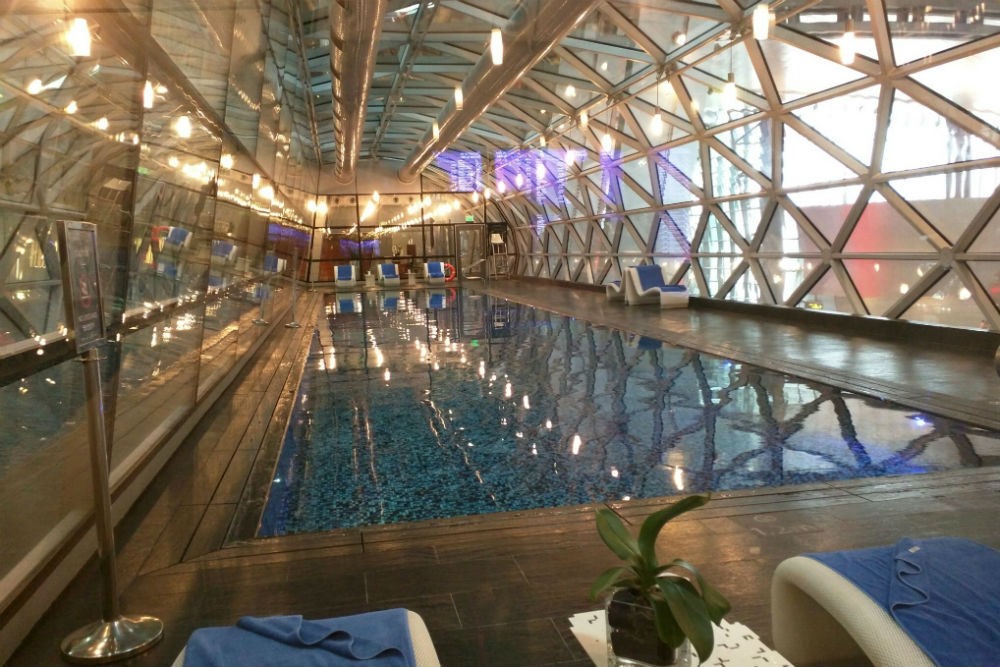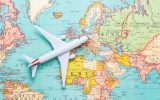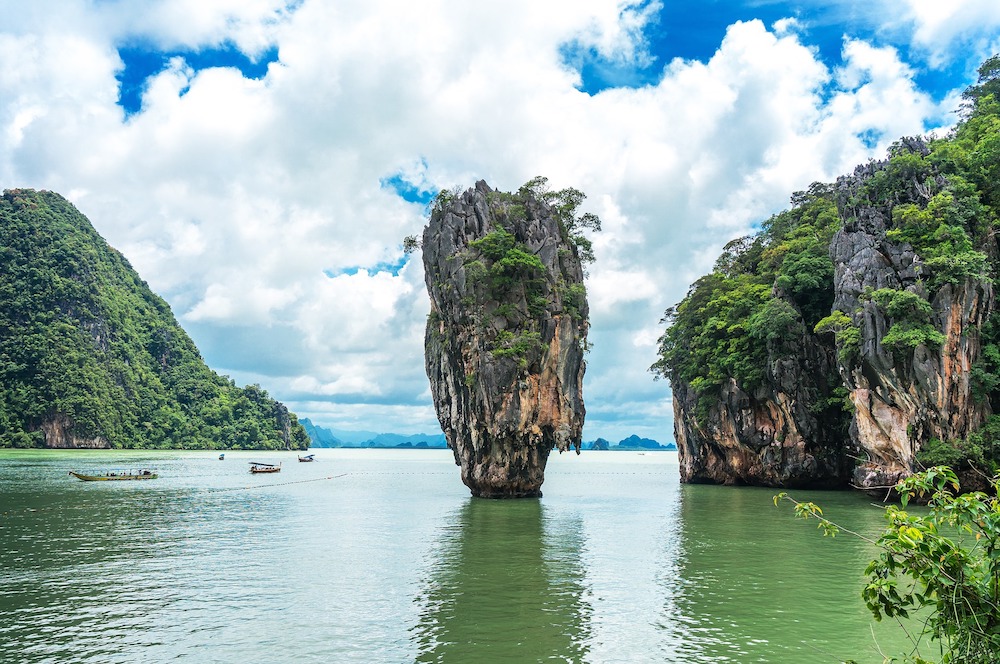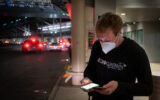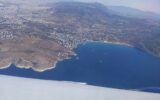As airlines continue to expand post-Covid, travelers can access an increasing variety of appealing destinations all across the globe via nonstop flights—a smart choice that minimizes the chance of your trip getting disrupted by delays or cancellations.
Below are our favorite routes (some new, some revitalized since Covid) that savvy travelers should know about.
We’re updating this article frequently as airlines announce new nonstop flights, so bookmark this page and come back for the latest intel.
Menu
Europe
Canada
Australia, New Zealand and Pacific Islands
Middle East and Africa
Latin America and the Caribbean
Asia
Europe
Atlanta to Amsterdam, the Netherlands, on Delta and KLM
Atlanta to Athens, Greece, on Delta (seasonal)
Atlanta to Barcelona, Spain, on Delta (seasonal)
Atlanta to Copenhagen, Denmark, on SAS (began June 17, 2024)
Atlanta to Dublin, Ireland, on Delta (seasonal)
Atlanta to Edinburgh, Scotland, on Delta (seasonal)
Atlanta to Frankfurt, Germany, on Delta
Atlanta to Istanbul, Turkey, on Turkish Airlines
Atlanta to London (Heathrow), England, on Delta and British Airways
Atlanta to Madrid, Spain, on Delta
Atlanta to Manchester, England, on Virgin Atlantic (seasonal)
Atlanta to Milan, Italy, on Delta (seasonal)
Atlanta to Munich, Germany, on Delta and Discover
Atlanta to Nice, France, on Delta (seasonal)
Atlanta to Paris, France, on Air France and Delta
Atlanta to Rome, Italy, on Delta
Atlanta to Shannon, Ireland, on Delta (seasonal)
Atlanta to Stuttgart, Germany, on Delta (seasonal)
Atlanta to Venice, Italy, on Delta (seasonal)
Atlanta to Zurich, Switzerland, on Delta (began May 31, 2024)
Austin to Amsterdam, the Netherlands, on KLM
Austin to Frankfurt, Germany, on Lufthansa
Austin to London (Heathrow), England, on Virgin Atlantic and British Airways
Baltimore to London (Heathrow), England, on British Airways
Baltimore to Reykjavik, Iceland, on Icelandair and PLAY (seasonal)
Boston to Amsterdam, the Netherlands, on Delta and JetBlue (late March through late October)
Boston to Athens, Greece, on Delta (seasonal)
Boston to Copenhagen, Denmark, on SAS
Boston to Barcelona, Spain, on LEVEL (seasonal)
Boston to Dublin, Ireland, on JetBlue (seasonal, through September 30, 2024)
Boston to Frankfurt, Germany, on Condor
Boston to Funchal, Madeira (Portugal), on Azores (seasonal, June 4, 2024 to September 25, 2024)
Boston to Istanbul, Turkey, on Turkish Airlines
Boston to Lisbon, Portugal, on Delta
Boston to London (Gatwick), England, on JetBlue (seasonal)
Boston to London (Heathrow), England, on United (through summer)
Boston to Madrid, Spain, on Iberia
Boston to Munich, Germany, on Lufthansa
Boston to Paris (CDG), France, on JetBlue
Boston to Ponta Delgada, the Azores (Portugal), on Azores
Boston to Porto, Portugal, on Azores
Boston to Reykjavik, Iceland, on PLAY (seasonal) and Icelandair
Boston to Shannon, Ireland, on Delta (seasonal)
Boston to Vienna, Austria, on Austrian (begins on July 1, 2024)
Charlotte to Dublin, Ireland, on American and Aer Lingus (both seasonal)
Charlotte to Frankfurt, Germany, on American
Charlotte to London (Heathrow), England, on American
Charlotte to Madrid, Spain, on American
Charlotte to Munich, Germany, on American
Charlotte to Paris, France, on American (seasonal)
Charlotte to Rome, Italy, on American (seasonal)
Chicago/O’Hare to Amsterdam, the Netherlands, on United
Chicago/O’Hare to Athens, Greece, on American (seasonal, began May 6, 2024) and United (seasonal, operates May 28-August 18, 2024)
Chicago/O’Hare to Barcelona, Spain, on United (seasonal)
Chicago/O’Hare to Brussels, Belgium, on United
Chicago/O’Hare to Copenhagen, Denmark, on SAS
Chicago/O’Hare to Edinburgh, Scotland, on United
Chicago/O’Hare to Frankfurt, Germany, on United
Chicago/O’Hare to Istanbul, Turkey, on Turkish Airlines
Chicago/O’Hare to London (Heathrow), England, on United
Chicago/O’Hare to Milan (Malpensa), Italy, on United (seasonal, runs until early December)
Chicago/O’Hare to Munich, Germany, on United
Chicago/O’Hare to Paris, France, on American (seasonal)
Chicago/O’Hare to Reykjavik, Iceland, on Icelandair and United (seasonal)
Chicago/O’Hare to Rome, Italy, on ITA and United (both seasonal)
Chicago/O’Hare to Shannon, Ireland, on United (seasonal)
Chicago/O’Hare to Venice, Italy, on American (seasonal, began June 5, 2024)
Chicago/O’Hare to Warsaw, Poland, on LOT
Chicago/O’Hare to Zurich, Switzerland, on United
Cincinnati to London (Heathrow), England, on British Airways (seasonal)
Cincinnati to Paris (CDG), France, on Delta (seasonal)
Cleveland to Dublin, Ireland, on Aer Lingus (seasonal)
Dallas/Fort Worth to Barcelona, Spain, on American
Dallas/Fort Worth to Dublin, Ireland, on American (seasonal)
Dallas/Fort Worth to Frankfurt, Germany, on American, Lufthansa
Dallas/Fort Worth to Helsinki, Finland, on Finnair
Dallas/Fort Worth to Istanbul, Turkey, on Turkish
Dallas/Fort Worth to London (Heathrow), England, on British Airways and American
Dallas/Fort Worth to Madrid, Spain, on Iberia
Dallas/Fort Worth to Paris (CDG), France, on American and Air France
Dallas/Fort Worth to Rome, Italy, on American (seasonal)
Denver to Dublin, Ireland, on Aer Lingus
Denver to Frankfurt, Germany, on United and Lufthansa
Denver to Istanbul, Turkey, on Turkish Airlines (began June 11, 2024)
Denver to London (Heathrow), England, on United and British Airways
Denver to Munich, Germany, on Lufthansa
Denver to Paris (CDG), France, on Air France
Denver to Munich, Germany, on United
Denver to Reykjavik, Iceland, on Icelandair
Denver to Zurich, Switzerland, on Swiss
Detroit to Amsterdam, the Netherlands, on Delta
Detroit to Frankfurt, Germany, on Lufthansa and Delta
Detroit to Istanbul, Turkey, on Turkish Airlines
Detroit to London (Heathrow), England, on Delta
Detroit to Munich, Germany, on Delta
Detroit to Paris (CDG), France, on Air France and Delta
Detroit to Reykjavik, Iceland, on Delta and Icelandair
Detroit to Rome, Italy, on Delta
Fort Myers to Frankfurt, Germany, on Eurowings Discover
Houston to Amsterdam, the Netherlands, on United
Houston to Frankfurt, Germany, on Lufthansa and United
Houston to Istanbul, Turkey, on Turkish Airlines
Houston to London (Heathrow), England, on British Airways and United
Houston to Munich, Germany, on United
Houston to Paris (CDG), France, on Air France
Las Vegas to Amsterdam, the Netherlands, on Delta
Las Vegas to Dublin, Ireland, on Aer Lingus (seasonal, begins October 25, 2024 and ends April 29, 2025)
Las Vegas to Frankfurt, Germany, on Eurowings Discover and Condor
Las Vegas to London (Gatwick), England, on Norse Atlantic
Las Vegas to London (Heathrow), England, on British Airways and Virgin Atlantic
Las Vegas to Munich, Germany, on Eurowings Discover
Las Vegas to Zurich, Switzerland, on Swiss
Los Angeles to Amsterdam, the Netherlands, on KLM
Los Angeles to Barcelona, Spain, on Iberia and LEVEL
Los Angeles to Copenhagen, Denmark, on SAS
Los Angeles to Dublin, Ireland, on Aer Lingus
Los Angeles to Frankfurt, Germany, on Condor (seasonal)
Los Angeles to London (Gatwick), England, on Norse Atlantic
Los Angeles to London (Heathrow), England, on British Airways, Delta, Virgin Atlantic and United
Los Angeles to Madrid, Spain, on Iberia
Los Angeles to Oslo, Norway, on Norse Atlantic
Los Angeles to Paris (CDG), France, on Air France, Air Tahiti Nui, Delta, and Norse Atlantic
Los Angeles to Paris (Orly), France, on French Bee (seasonal)
Los Angeles to Warsaw, Poland, on LOT
Miami to Amsterdam, the Netherlands, on KLM (halts service summer 2024)
Miami to Berlin, Germany, on Norse Atlantic
Miami to Frankfurt, Germany, on Condor
Miami to Istanbul, Turkey, on Turkish Airlines
Miami to London (Gatwick), England, on Norse Atlantic, British Airways, American
Miami to Madrid, Spain, on Iberia
Miami to Oslo, Norway, on Norse Atlantic
Miami to Paris (CDG), France, on American and Air France
Miami to Paris (Orly), France, on French Bee
Miami to Warsaw, Poland, on LOT
Minneapolis/St. Paul to Amsterdam, the Netherlands, on Delta and KLM
Minneapolis/St. Paul to Dublin, Ireland, on Aer Lingus and Delta (began May 9, 2024)
Minneapolis/St. Paul to Frankfurt, Germany, on Lufthansa (began June 2024) and Condor
Minneapolis/St. Paul to London (Heathrow), England, on Delta
Minneapolis/St. Paul to Paris (CDG), France, on Air France, Delta and Condor
Minneapolis/St. Paul to Reykjavik, Iceland, on Icelandair (seasonal)
Minneapolis/St. Paul to Shannon, Ireland, on Delta (seasonal)
Nashville to London (Heathrow), England, on British Airways
Newark to Amsterdam, the Netherlands, on United
Newark to Athens, Greece, on Emirates and United (seasonal)
Newark to Barcelona, Spain, on United (seasonal)
Newark to Copenhagen, Denmark, on SAS
Newark to Dubrovnik, Croatia, on United (seasonal)
Newark to Edinburgh, Scotland, on United (seasonal)
Newark to Faro, Portugal’s Algarve, on United (begins 2025)
Newark to Frankfurt, Germany, on United
Newark to Gothenberg, Sweden, on SAS (through mid-October)
Newark to Istanbul, Turkey, on Turkish Airlines
Newark to Lisbon, Portugal, on United
Newark to London (Heathrow), England, on United
Newark to Malaga, Spain, on United (seasonal)
Newark to Milan, Italy, on United
Newark to Naples, Italy, on United (seasonal)
Newark to Nice, France, on United
Newark to Oslo, Norway, on SAS
Newark to Palma de Mallorca, Spain, on United (seasonal)
Newark to Paris (CDG), France, on Air France and United
Newark to Ponta Delgada, the Azores (Portugal), on United (seasonal)
Newark to Porto, Portugal, on TAP Air Portugal and United (seasonal)
Newark to Reykjavik, Iceland, on United (seasonal)
Newark to Rome, Italy, on United (seasonal)
Newark to Shannon, Ireland, on United (seasonal)
Newark to Stockholm, Sweden, on SAS and United (seasonal)
Newark to Tenerife, the Canary Islands (Spain), on United (seasonal)
Newark to Warsaw, Poland, on LOT
Newark to Vienna, Austria, on Austrian
New York/JFK to Amsterdam, the Netherlands, on Delta and JetBlue
New York/JFK to Athens, Greece, on Delta, Norse Atlantic, United, and American (seasonal, began March 2024)
New York/JFK to Barcelona, Spain, on Delta and American (seasonal)
New York/JFK to Belgrade, Serbia, on Air Serbia
New York/JFK to Berlin, Germany, on Delta and Norse Atlantic (seasonal)
New York/JFK to Brussels, Belgium, on Delta (seasonal)
New York/JFK to Copenhagen, Denmark, on SAS
New York/JFK to Dublin, Ireland, on JetBlue (seasonal, through September 30, 2024)
New York/JFK to Edinburgh, Scotland, on JetBlue (seasonal, May 22 to September 30, 2024)
New York/JFK to Funchal, Madeira (Portugal), on Azores (seasonal, April 1, 2024 to October 21, 2024)
New York/JFK to Istanbul, Turkey, on Turkish Airlines
New York/JFK to London (Gatwick), England, on British Airways, Delta, JetBlue (seasonal), and Norse Atlantic
New York/JFK to London (Heathrow), England, on American, British Airways, Delta, and Virgin Atlantic
New York/JFK to Madrid, Spain, on Iberia
New York/JFK to Milan, Italy, on American, Delta, and Emirates
New York/JFK to Munich, Germany, on Delta (began on April 9, 2024)
New York/JFK to Naples, Italy, on Delta (seasonal, began May 23, 2024)
New York/JFK to Oslo, Norway, on Norse Atlantic
New York/JFK to Palermo, Sicily (Italy), on Neos Air (seasonal, June through October)
New York/JFK to Paris (CDG), France, on Air France, American, Delta, JetBlue, and Norse Atlantic (seasonal)
New York/JFK to Porto, Portugal, on Azores (seasonal April 3, 2024 to October 23, 2024)
New York/JFK to Ponta Delgada, the Azores (Portugal), on Azores (seasonal, April 1, 2024 to December 27, 2024)
New York/JFK to Reykjavik, Iceland, on Icelandair
New York/JFK to Rome, Italy, on American, Delta, and Norse Atlantic (seasonal)
New York/JFK to Shannon, Ireland, on Delta (seasonal, May-September 2024)
New York/JFK to Stockholm, Sweden, on Delta
New York/JFK to Terceira, the Azores (Portugal), on Azores (seasonal, June 1, 2024 to September 28, 2024)
New York/JFK to Warsaw, Poland, on LOT
New York State/Stewart Airport to Faroe Islands (Denmark), on Atlantic (seasonal)
Oakland to Terceira, the Azores (Portugal), on Azores (seasonal, June 4, 2024 to September 25, 2024)
Orlando to Amsterdam, the Netherlands, on Delta
Orlando to Frankfurt, Germany, on Eurowings (winter)
Orlando to London (Gatwick), England, on Norse Atlantic and British Airways
Orlando to London (Heathrow), England, on Delta (seasonal, October 26, 2024-March 30, 2025) and Virgin Atlantic
Philadelphia to Amsterdam, the Netherlands, on American
Philadelphia to Athens, Greece, on American (seasonal)
Philadelphia to Barcelona, Spain, on American
Philadelphia to Copenhagen, Denmark, on American (began on June 6, 2024)
Philadelphia to Dublin, Ireland, on American (seasonal) and Aer Lingus
Philadelphia to Frankfurt, Germany, on Eurowings Discover
Philadelphia to Lisbon, Portugal, on American
Philadelphia to London (Heathrow), England, on British Airways and American
Philadelphia to Madrid, Spain, on American
Philadelphia to Naples, Italy, on American (seasonal, began on June 5, 2024)
Philadelphia to Nice, France, on American (seasonal, began May 6, 2024)
Philadelphia to Paris (CDG), France, on American
Philadelphia to Venice, Italy, on American (seasonal, began April 2024)
Philadelphia to Zurich, Switzerland, on American
Phoenix to Frankfurt, Germany, on American
Phoenix to London (Heathrow), England, on American and British Airways
Phoenix to Paris, France, on Air France (began May 23, 2024)
Pittsburgh to London (Heathrow), England, on British Airways
Pittsburgh to Reykjavik, Iceland, on Icelandair
Portland, Oregon to Amsterdam, the Netherlands, on Delta (moves to KLM on October 27, 2024)
Portland, Oregon to London (Heathrow), England, on British Airways
Raleigh Durham to Frankfurt, Germany, on Lufthansa (began June 2024)
Raleigh Durham to London (Heathrow), England, on American
Raleigh Durham to Paris (CDG), France, on Delta and Air France
Raleigh Durham to Reykjavik, Iceland, on Icelandair
St. Louis to Frankfurt, Germany, on Lufthansa
Salt Lake City to Amsterdam, the Netherlands, on Delta and KLM
Salt Lake City to Frankfurt, Germany, on Eurowings Discover
Salt Lake City to London (Heathrow), England, on Delta
Salt Lake City to Paris, France, on Delta
San Antonio to Frankfurt, Germany, on Condor (began May 17, 2024)
San Diego to London (Heathrow), England, on British Airways
San Francisco to Amsterdam, the Netherlands, on KLM
San Francisco to Barcelona, Spain, on LEVEL and United (both seasonal)
San Francisco to Copenhagen, Denmark, on SAS
San Francisco to Dublin, Ireland, on Aer Lingus
San Francisco to Frankfurt, Germany, on Condor
San Francisco to Istanbul, Turkey, on Turkish Airlines
San Francisco to Lisbon, Portugal, on TAP Air Portugal
San Francisco to London (Heathrow), England, on United
San Francisco to Madrid, Spain, on Iberia (seasonal)
San Francisco to Munich, Germany, on Lufthansa and United
San Francisco to Paris (CDG), France, on United
San Francisco to Rome, Italy, on ITA and United (both seasonal)
San Francisco to Zurich, Switzerland, on United (seasonal)
Seattle to Amsterdam, the Netherlands, on Delta
Seattle to Helsinki, Finland, on Finnair (seasonal)
Seattle to Istanbul, Turkey, on Turkish
Seattle to London (Heathrow), England, on British Airways
Seattle to Munich, Germany, on Lufthansa (began June 2024)
Seattle to Paris (CDG), France, on Air France
St Louis to Frankfurt, Germany, on Lufthansa
Tampa to Amsterdam, the Netherlands, on Delta (seasonal, begins October 26)
Tampa to Frankfurt, Germany, on Eurowings Discover
Tampa to London (Gatwick), England, on British Airways
Tampa to London (Heathrow), England, on Virgin Atlantic
Tampa to Zurich, Switzerland, on Edelweiss Air
Washington/Dulles to Amsterdam, the Netherlands, on United (seasonal, began March)
Washington/Dulles to Athens, Greece, on United (seasonal, operates April 14-December 3)
Washington/Dulles to Barcelona, Spain, on United (seasonal, began February 2024)
Washington/Dulles to Berlin, Germany, on United (seasonal)
Washington/Dulles to Brussels, Belgium, on Lufthansa
Washington/Dulles to Copenhagen, Denmark, on SAS
Washington/Dulles to Dublin, Ireland, on Aer Lingus and United
Washington/Dulles to Frankfurt, Germany, on United and Lufthansa
Washington/Dulles to Geneva, Switzerland, on United
Washington/Dulles to Istanbul, Turkey, on Turkish Airlines
Washington/Dulles to Lisbon, Portugal, on United (seasonal, began February 2024)
Washington/Dulles to London (Heathrow), England, on United
Washington/Dulles to Madrid, Spain, on Iberia
Washington/Dulles to Munich, Germany, on United and Lufthansa
Washington/Dulles to Paris, France, on Air France, United
Washington/Dulles to Reykjavik, Iceland, on Icelandair and PLAY
Washington/Dulles to Rome, Italy, on United (seasonal, began February 2024)
Washington/Dulles to Vienna, Austria, on Lufthansa
Washington/Dulles to Zurich, Switzerland, on Swiss (began March 2024) and United
Canada
Atlanta to Calgary, on WestJet
Atlanta to Montreal, on Air Canada
Atlanta to Toronto, on Delta, Air Canada
Atlanta to Vancouver, on WestJet
Austin to Montreal, on Air Canada (began May 2, 2024)
Austin to Toronto, on Air Canada
Austin to Vancouver, on Air Canada (seasonal)
Boston to Ottawa, on Porter
Boston to Vancouver, on Air Canada
Charleston to Toronto, on Air Canada (began March 2024)
Charlotte to Montreal, on American Eagle
Charlotte to Toronto, on American and Air Canada – Jazz Express
Chicago to Calgary, on United
Chicago to Montreal, on United
Chicago to Ottawa, on United
Chicago to Quebec, on United (seasonal, begins May 2024)
Chicago to Toronto, on United
Chicago Midway to Toronto, on Porter
Chicago to Vancouver, on United
Denver to Calgary, on United and Air Canada
Denver to Montreal, on Air Canada and United
Denver to Toronto, on Air Canada and United
Detroit to Montreal, on Air Canada
Detroit to Calgary, on WestJet
Fort Lauderdale to Ottawa, on Air Canada and Porter
Fort Lauderdale to Toronto, on Porter
Houston to Calgary, on United and WestJet
Houston to Montreal, on Air Canada
Houston to Toronto, on Air Canada and United
Houston to Vancouver, on Air Canada and United
Las Vegas to Montreal, on Air Canada
Las Vegas to Toronto, on Air Canada and Porter
Las Vegas to Vancouver, on Air Canada
Los Angeles to Kelowna, British Columbia, on Alaska (begins December 19, 2024, ends March 17, 2025)
Los Angeles to Montreal, on Porter (seasonal)
Los Angeles to Toronto, on Porter
Los Angeles to Vancouver, on Flair
Miami to Montreal, on Air Canada
Minneapolis/St. Paul to Calgary, on Delta
Maui to Vancouver, on Air Canada
Minneapolis/St. Paul to Montreal, on Air Canada
Minneapolis/St. Paul to Toronto, on Air Canada and Delta
Minneapolis/St. Paul to Vancouver, on Delta
Nashville to Calgary, on WestJet
Nashville to Toronto, on Air Canada and WestJet
Nashville to Vancouver, on WestJet
New York/JFK to Montreal, on Delta, American and Air Canada
New York/JFK to Toronto, on Air Canada, American and Delta
New York/JFK to Vancouver, on JetBlue
Newark to Halifax, on United (seasonal, began May 23, 2024)
Newark to Montreal, on United
Newark to Ottawa, on Air Canada (seasonal)
Newark to Toronto on United
Orlando to Ottawa, on Air Canada and Porter
Orlando to Toronto, on Porter
Palm Springs to Vancouver, on Flair
Philadelphia to Toronto, on American
Phoenix to Calgary, on Delta
Phoenix to Toronto, on Air Canada and Porter
Phoenix to Vancouver, on Air Canada and Flair
Pittsburgh to Montreal, on Air Canada
Pittsburgh to Toronto, on Air Canada
Raleigh Durham to Montreal, on Air Canada
Raleigh Durham to Toronto, on Air Canada
St Louis to Montreal, on Air Canada (seasonal, began May 1, 2024)
Salt Lake City to Calgary, on Delta
Salt Lake City to Toronto, on Air Canada
Salt Lake City to Vancouver, on Delta
San Diego to Montreal, on Air Canada
San Francisco to Calgary, on United
San Francisco to Montreal, on Porter (seasonal) and United
San Francisco to Toronto, on United
San Francisco to Vancouver, on United
Seattle to Montreal, on Air Canada
Seattle to Toronto, on Alaska (began May 16, 2024)
Tampa to Ottawa, on Air Canada
Washington/Dulles to Vancouver, on United (seasonal, began May 23, 2024)
Australia, New Zealand and Pacific Islands
Chicago to Auckland, New Zealand, on Air New Zealand (seasonal)
Dallas/Fort Worth to Brisbane, Australia, on American (begins October 27, 2024)
Honolulu to Auckland, New Zealand, on Air New Zealand
Honolulu to Rarotonga, Cook Islands, on Hawaiian
Honolulu to Sydney, Australia, on Jetstar
Houston to Auckland, New Zealand, on Air New Zealand
Los Angeles to Auckland, New Zealand, on Air New Zealand and Delta (seasonal)
Los Angeles to Brisbane, Australia, on Delta (Dec. 4, 2024 through March 28, 2025)
Los Angeles to Melbourne, Australia, on United
Los Angeles to Papeete (Tahiti), French Polynesia, on Delta, Air Tahiti Nui, and Air France
Los Angeles to Sydney, Australia, on American and Delta
New York/JFK to Auckland, New Zealand, on Air New Zealand and Qantas
San Francisco to Auckland, New Zealand, on Air New Zealand and United
San Francisco to Brisbane, Australia, on United
San Francisco to Christchurch, New Zealand, on United
San Francisco to Melbourne, Australia, on United
San Francisco to Papeete (Tahiti), French Polynesia, on French Bee and United
San Francisco to Sydney, Australia, on United
Seattle to Papeete (Tahiti), French Polynesia, on Air Tahiti Nui
Middle East and Africa
UPDATE on April 16, 2024: United—the only U.S. airline to resume its service to Israel since October—has paused those flights. El Al continues to operate between the U.S. and Israel.
Atlanta to Cape Town, South Africa, on Delta
Atlanta to Doha, Qatar, on Qatar Airways
Atlanta to Johannesburg, South Africa, on Delta
Atlanta to Tel Aviv, Israel, on Delta (suspended) and El Al
Boston to Tel Aviv, Israel, on Delta (suspended) and El Al
Chicago to Abu Dhabi, United Arab Emirates, on Etihad
Chicago to Amman, Jordan, on Royal Jordanian
Chicago to Doha, Qatar, on Qatar Airways
Chicago to Dubai, United Arab Emirates, on Emirates
Chicago to Tel Aviv, Israel, on United (resumes October 2024) and El Al
Dallas/Fort Worth to Doha, Qata, on Qatar
Dallas/Fort Worth to Dubai, United Arab Emirates, on Emirates
Dallas/Fort Worth to Tel Aviv, Israel on American (resumes October 2024)
Detroit to Amman, Jordan, on Royal Jordanian
Ft. Lauderdale to Tel Aviv, Israel, on El Al
Los Angeles to Tel Aviv, Israel, on El Al
Miami to Doha, Qatar, on Qatar
Miami to Dubai, United Arab Emirates, on Emirates
Newark to Cape Town, South Africa, on United
Newark to Cairo, Egypt, on Egyptair
Newark to Dubai, United Arab Emirates, on United
Newark to Johannesburg, South Africa, on United
Newark to Marrakech, Morocco, on United (begins October 24, 2024)
Newark to Tel Aviv, Israel, on El Al and United (resumed June 6, 2024)
New York/JFK to Abu Dhabi, United Arab Emirates, on Etihad
New York/JFK to Amman, Jordan, on Royal Jordanian
New York/JFK to Casablanca, Marrakech, on Royal Air Maroc
New York/JFK to Doha, Qatar, on American
New York/JFK to Dubai, United Arab Emirates, on Emirates
New York/JFK to Nairobi, Kenya, on Kenya Airways
New York/JFK to Tel Aviv, Israel, on American (resumes October 27, 2024), Delta (resumed June 7, 2024), and El Al
Miami to Tel Aviv, Israel, on El Al
Philadelphia to Doha, Qatar, on American
San Francisco to Tel Aviv, Israel, on United (resumes October 2024)
Seattle to Doha, Qatar, on Qatar Airways
Washington/Dulles to Amman, Jordan, on United
Washington/Dulles to Casablanca, Morocco, on Royal Air Maroc
Washington/Dulles to Doha, Qatar, on Qatar Airways
Washington/Dulles to Tel Aviv, Israel, on United (resumes October 2024)
Latin America and the Caribbean
Atlanta to Belize City, on Delta
Atlanta to Bogota, Colombia, on Delta
Atlanta to Buenos Aires, Argentina, on Aerolineas Argentinas and Delta
Atlanta to Cancun, Mexico, on JetBlue and Southwest
Atlanta to Cartagena, Colombia, on Delta and LATAM
Atlanta to Cozumel, Mexico, on Delta
Atlanta to Curacao, the Caribbean, on Delta
Atlanta to Liberia, Costa Rica, on Delta
Atlanta to Lima, Peru, on LATAM and Delta
Atlanta to Mexico City, on Delta and Aeromexico
Atlanta to Panama City, on Delta
Atlanta to Puerto Vallarta, Mexico, on Aeromexico and Delta
Atlanta to Querétaro, Mexico, on Aeromexico
Atlanta to Quito, Ecuador, on Delta and LATAM
Atlanta to Rio de Janeiro, Brazil, on Delta
Atlanta to San Jose, Costa Rica, on Delta and Frontier
Atlanta to San Jose del Cabo, Mexico, on Aeromexico and Delta
Atlanta to Santiago, Chile, on Delta
Atlanta to São Paulo, Brazil, on Delta and LATAM
Atlanta to Tulum, Mexico, on Delta
Austin to Cancun, Mexico, on American
Austin to Cozumel, Mexico, on American and Southwest
Austin to Liberia, Costa Rica, on American
Austin to Mexico City, on Aeromexico
Austin to Panama City, on Copa
Austin to Puerto Vallarta, Mexico, on Southwest
Austin to San Jose del Cabo, Mexico, on American and Southwest
Baltimore to Cancun, Mexico, on Frontier
Baltimore to Panama City, on Copa (seasonal)
Boston to Bogota, Colombia, on Avianca
Boston to Mexico City, on Aeromexico
Boston to Liberia, Costa Rica, on Delta (seasonal)
Boston to Panama City, on Copa
Charlotte to Belize City, on American
Charlotte to Cancun, Mexico, on American
Charlotte to Cozumel, Mexico, on American
Charlotte to Curacao, the Caribbean, on American
Charlotte to San Jose, Costa Rica, on American
Charlotte to San Jose del Cabo, Mexico, on American
Charlotte to Tulum, Mexico, on American
Chicago O’Hare to Bogota, Colombia, on Avianca (begins October 27, 2024)
Chicago O’Hare to Cancun, Mexico, on American and United
Chicago O’Hare to Guatemala City, on Avianca
Chicago O’Hare to San Jose del Cabo, Mexico, on American and United
Chicago O’Hare to Mexico City, on Aeromexico
Chicago O’Hare to Puerto Vallarta, Mexico, on United
Chicago O’Hare to Tulum, Mexico, on United
Cincinnati to Cancun, Mexico, on American
Dallas/Ft. Worth to Buenos Aires, Argentina, on American
Dallas/Ft. Worth to Cancun, Mexico, on American
Dallas/Ft. Worth to Cozumel, Mexico, (seasonal)
Dallas/Ft. Worth to San Jose del Cabo, Mexico, on American
Dallas/Ft. Worth to Mexico City (NLU), on Aeromexico and American
Dallas/Ft. Worth to Oaxaca, Mexico, on American
Dallas/Ft. Worth to Puerto Vallarta, Mexico, on American
Dallas/Ft. Worth to Santiago, Chile, on American
Dallas/Ft. Worth to Tulum, Mexico, on American
Dallas/Ft. Worth to Zihuatanejo, Mexico, on American
Denver to Belize City, on United
Denver to Cancun, Mexico, on United and Southwest
Denver to Cozumel, Mexico, on United (seasonal) and Southwest
Denver to Liberia, Costa Rica, on United
Denver to Panama City, on United and Southwest
Denver to Puerto Vallarta, Mexico, on United and Southwest
Denver to Roatan, Honduras, on United
Denver to San Jose, Costa Rica, on United
Denver to San Jose del Cabo, Mexico, on United and Southwest
Detroit to Mexico City, on Aeromexico
Detroit to Providenciales, Turks & Caicos, the Caribbean, on Delta (seasonal)
Fort Lauderdale to Belém, Brazil’s Amazon, on Azul
Fort Lauderdale to Bucaramanga, Colombia, on Spirit
Fort Lauderdale to Kingston, Jamaica, the Caribbean, on JetBlue (begins August 2024)
Fort Lauderdale to Manaus, Brazil’s Amazon, on Azul
For Lauderdale to Recife, Brazil, on Azul
Houston to Cancun, Mexico, on United
Houston to Medellin, Colombia, on United (begins October 27, 2024)
Houston to Mexico City, on Aeromexico
Houston to Oaxaca, Mexico, on United
Houston to Panama City, on United
Houston to Puebla, Mexico, on United
Houston to Puerto Vallarta, Mexico, on United
Houston to San Jose, Costa Rica, on United
Houston to Tulum, Mexico, on United
Kansas City to Cancun, Mexico, on Alaska (begins January 18, 2025, ends June 7, 2025)
Kansas City to Puerto Vallarta, Mexico, on Alaska (begins January 25, 2025, ends April 5, 2025)
Kansas City to San Jose del Cabo, Mexico, on Southwest (seasonal)
Las Vegas to San Jose del Cabo, Mexico, on Alaska (seasonal, begins late October)
Las Vegas to Mexico City, on Aeromexico
Las Vegas to Puerto Vallarta, Mexico, on Alaska
Los Angeles to Belize City, on Alaska
Los Angeles to Grand Cayman, the Caribbean, on Cayman Airways
Los Angeles to Guatemala City, on Alaska, United
Los Angeles to Lima, Peru, on LATAM
Los Angeles to Mexico City, on Aeromexico and American (seasonal)
Los Angeles to Nassau, Bahamas, on Alaska
Los Angeles to Puerto Vallarta, Mexico, on American and United
Los Angeles to San Jose, Costa Rica, on United
Los Angeles to San Jose del Cabo, Mexico, on American and United
Los Angeles to San Pedro Sula, Honduras, on United
Los Angeles to Santiago, Chile, on LATAM
Los Angeles to São Paulo, Brazil, on LATAM
Los Angeles to Tulum, Mexico, on United
Miami to Barranquilla, Colombia, on American
Miami to Bogota, Colombia, on Avianca, American, LATAM, Emirates (began June 3)
Miami to Buenos Aires (EZE), Argentina, on Aerolineas Argentinas and American
Miami to Cali, Colombia, on American and Avianca
Miami to Cancun, Mexico, on American
Miami to Cozumel, Mexico, on American
Miami to Cartagena, Colombia, on Avianca
Miami to Fortaleza, Brazil, on LATAM
Miami to Guatemala City, on Avianca
Miami to Havana, Cuba, on Delta
Miami to Liberia, Costa Rica, on American
Miami to Lima, Peru, on American and LATAM
Miami to Medellin, Colombia, on American and Avianca
Miami to Mexico City, on American and Aeromexico
Miami to Panama City, on American
Miami to Quito, Ecuador, on America, Avianca, and LATAM
Miami to Rio de Janeiro, Brazil, on American
Miami to San Jose, Costa Rica, on American
Miami to Santa Cruz de la Sierra, Bolivia, on Boliviana
Miami to São Paulo, Brazil, on American
Miami to Santiago, Chile, on American and LATAM
Miami to Tulum, Mexico, on American
Minneapolis/St Paul to Aruba, the Caribbean, on Delta (seasonal, December 20, 2024-April 20, 2025)
Minneapolis/St Paul to Belize City, on Delta (begins December 2024)
Minneapolis/St Paul to Cancun, Mexico, on Delta
Minneapolis/St. Paul to Cozumel, Mexico, on Delta
Minneapolis/St Paul to Grand Cayman, the Caribbean, on Delta
Minneapolis/St. Paul to Mexico City, on Delta
Minneapolis/St Paul to St. Maarten, the Caribbean, on Delta (seasonal, December 19, 2024-April 12, 2025)
Nashville to Cancun, Mexico, on American and Southwest
New York/JFK to Antigua, the Caribbean, on Delta (seasonal)
New York/JFK to Belize City, on JetBlue
New York/JFK to Buenos Aires (EZE), Argentina, on American and Delta
New York/JFK to Cali, Colombia, on American and Avianca
New York/JFK to Cancun, Mexico, on American (seasonal)
New York/JFK to Cartagena, Colombia, on Avianca
New York/JFK to San Jose del Cabo, Mexico, on Delta
New York/JFK to Mexico City, on Aeromexico, Delta, and American
New York/JFK to Pereira, Colombia, on Avianca
New York/JFK to Puerto Vallarta, Mexico, on Alaska (begins January 8, 2025, ends April 20, 2025)
New York/JFK to Quito, Ecuador, on Avianca
New York/JFK to Rio de Janeiro, Brazil, on Delta
New York/JFK to San Pedro Sula, Honduras, on Avianca
New York/JFK to St. Kitts, the Caribbean, on Delta (seasonal) and JetBlue
New York/JFK to Tulum, Mexico, on JetBlue (began June 13, 2024)
Newark to Cartagena, Colombia, on JetBlue
Newark to Guatemala City, on United
Newark to Panama City, on United, Copa
Newark to San Jose, Costa Rica, on United
Newark to Tulum, Mexico, on United
Orlando to Belize City, on Frontier
Orlando to Bogota, Colombia, on LATAM
Orlando to Cali, Colombia, on Avianca
Orlando to Fortaleza, Brazil, on Gol
Orlando to Liberia, Costa Rica, on Frontier
Orlando to Medellín, Colombia, on Avianca
Orlando to Quito, Ecuador, on Avianca
Orlando to Recife, Brazil, on Azul
Orlando to Santiago, Chile, on LATAM
Orlando to São Paulo, Brazil, on LATAM
Philadelphia to Aruba, the Caribbean, on American
Philadelphia to Cancun, Mexico, on American
Philadelphia to Liberia, Costa Rica, on American
Philadelphia to Turks and Caicos, the Caribbean, on American
Phoenix to Cancun, Mexico, on American and Southwest
Phoenix to Mexico City, on American
Phoenix to Puerto Vallarta, Mexico, on American and Southwest
Phoenix to San Jose del Cabo, Mexico, on American and Southwest
Pittsburgh to Cancun, Mexico, on American
Portland, Oregon to San Jose del Cabo, Mexico, on Alaska
Portland, Oregon to Puerto Vallarta, Mexico, on Alaska
Raleigh Durham to Mexico City, on Aeromexico
Raleigh Durham to Panama City, on Copa (began June 21, 2024)
Sacramento to Mexico City, on Volaris
Sacramento to Puerto Vallarta, Mexico, on Alaska (begins January 11, 2025, ends April 19, 2025)
Sacramento to San Jose del Cabo, Mexico, on Alaska (begins January 26, 2025, ends April 21, 2025)
St. Louis to Puerto Vallarta, Mexico, on Alaska (begins January 25, 2025, ends April 5, 2025)
Salt Lake City to Mexico City, on Aeromexico
San Antonio to Mexico City, on Aeromexico
San Diego to Cancun, Mexico, on Alaska (begins January 2025)
San Francisco to Cancun, Mexico, on Alaska
San Francisco to Liberia, Costa Rica, on Alaska (begins December 21, 2024, ends May 10, 2025) and United
San Francisco to Mexico City, on Aeromexico
San Francisco to Panama City, on Copa
Seattle to Belize City, on Alaska
Seattle to Cancun, Mexico, on Alaska
San Francisco to Liberia, Costa Rica, on Alaska (begins December 21, 2024, ends May 11, 2025)
Seattle to Nassau, Bahamas, on Alaska
Washington/Dulles to Mexico City, on Aeromexico and United
Washington/Dulles to San Jose, Costa Rica, on Avianca
Asia
Atlanta to Seoul, South Korea, on Delta
Atlanta to Tokyo (HND), Japan, on Delta
Boston to Beijing, China, on Hainan Airlines
Boston to Seoul, South Korea, on Korean Air
Boston to Tokyo (NRT), Japan, on American, Japan Airlines
Chicago to Delhi, India, on United and Air India
Chicago O’Hare to Tokyo (HND), Japan on Japan Airlines, All Nippon Airways, United Airlines
Chicago O’Hare to Tokyo (NRT), Japan, on All Nippon Airways
Dallas/Ft. Worth to Seoul, South Korea, on American
Dallas/Fort Worth to Shanghai, China on American
Dallas/Fort Worth to Tokyo (HND), Japan, on American
Detroit to Seoul, South Korea, on Delta
Detroit to Shanghai, China, on China Eastern and Delta
Detroit to Tokyo (HND), Japan, on Delta
Denver to Tokyo (NRT), Japan, on United
Honolulu to Fukuoka, Japan’s Kyushu Island, on Hawaiian
Honolulu to Manila, the Philippines, on Philippine Airlines
Honolulu to Osaka, Japan, on Hawaiian and Japan Airlines
Honolulu to Nagoya, Japan, on Japan Airlines
Honolulu to Taipei, Taiwan, on Air China (began June 2024)
Honolulu to Tokyo (HND), Japan, on Delta and Hawaiian
Honolulu to Tokyo (NRT), Japan, on Hawaiian
Las Vegas to Seoul, South Korea, on Korean Airlines
Los Angeles to Beijing, China, on Air China
Los Angeles to Hong Kong, on American Airlines, Cathay Pacific, and United
Los Angeles to Manila, the Philippines, on Philippine Airlines
Los Angeles to Osaka, Japan, on Japan Airlines
Los Angeles to Seoul, South Korea, on Asiana and Korean Air
Los Angeles to Shanghai, China, on China Eastern, Delta (ending winter 2024), and United (begins August 29, 2024)
Los Angeles to Singapore, on Singapore Air
Los Angeles to Tokyo (HND), Japan, on United
Los Angeles to Tokyo (NRT), Japan, on American Airlines, United, and ZIPAIR
Minneapolis to Seoul, South Korea, on Delta
Minneapolis to Tokyo (HND), Japan, on Delta
Newark to Delhi, India, on Air India and United
Newark to Mumbai, India, on Air India
Newark to Singapore, on Singapore Airlines
Newark to Tashkent, Uzbekistan, on Uzbekistan Airlines
Newark to Tokyo (HND), Japan, on United
Newark to Tokyo (NRT), Japan on United
New York (JFK) to Beijing, China, on Air China
New York/JFK to Delhi, India, on American Airlines and Air India
New York/JFK to Hong Kong, on Cathay Pacific
New York/JFK to Mumbai, India, on Air India
New York/JFK to New Delhi, India, on Air India, American
New York/JFK to Manila, the Philippines, on Philippine Airlines
New York/JFK to Seoul, South Korea, on Asiana, Korean
New York/JFK to Singapore, on Singapore Air
New York/JFK to Taipei, Taiwan, on Eva Air, Air China
New York/JFK to Tashkent, Uzbekistan, on Uzbekistan Airways
New York/JFK to Tokyo (HND), Japan, on Japan Airlines, ANA, and American (began June 28, 2024)
San Diego to Tokyo (NRT), Japan, on Japan Airlines
San Jose to Tokyo (NRT), Japan, on ZIPAIR
San Francisco to Beijing, China, on Air China
San Francisco to Delhi, India, on Air India
San Francisco to Ho Chi Minh City, Vietnam, on Vietnam Airlines
San Francisco to Hong Kong, on Cathay Pacific and United
San Francisco to Manila, the Philippines, on Philippine Airlines and United
San Francisco to Mumbai, India, on Air India
San Francisco to Osaka, Japan, on United
San Francisco to Seoul, South Korea, on Asiana, Korean Airlines, and United
San Francisco to Shanghai, China, on China Eastern and United
San Francisco to Singapore, on United and Singapore Airlines
San Francisco to Taipei, Taiwan, on China Airlines, EVA Air and United
San Francisco to Tokyo (HND), Japan, on ANA, Japan Airlines, and United
San Francisco to Tokyo (NRT), Japan, on ANA, Japan Airlines, United and ZIPAIR
Seattle to Beijing (PKX), China, on Delta (seasonal) and Hainan Airlines
Seattle to Manila, the Philippines, on Philippine Airlines (begins October 2, 2024)
Seattle to Seoul, South Korea, on Asiana and Delta
Seattle to Tokyo (NRT), Japan, on ANA, Japan Airlines, Delta, United and American
Seattle to Shanghai, China, on Delta
Seattle to Singapore, on Singapore Arlines
Seattle to Taipei, Taiwan, on Delta (began June 6, 2024) and China Airlines (begins July 2024)
Washington/Dulles to Delhi, India, on Air India
Washington/Dulles to Incheon, South Korea, on Korean Air
Washington/Dulles to Tokyo (HND), Japan, on United and ANA
Be a smarter traveler: Sign up for Wendy’s weekly newsletter to stay in the know. Read real travelers’ reviews, then use the black CONTACT buttons on Wendy’s WOW List to reach out to the right local fixer for your trip.

